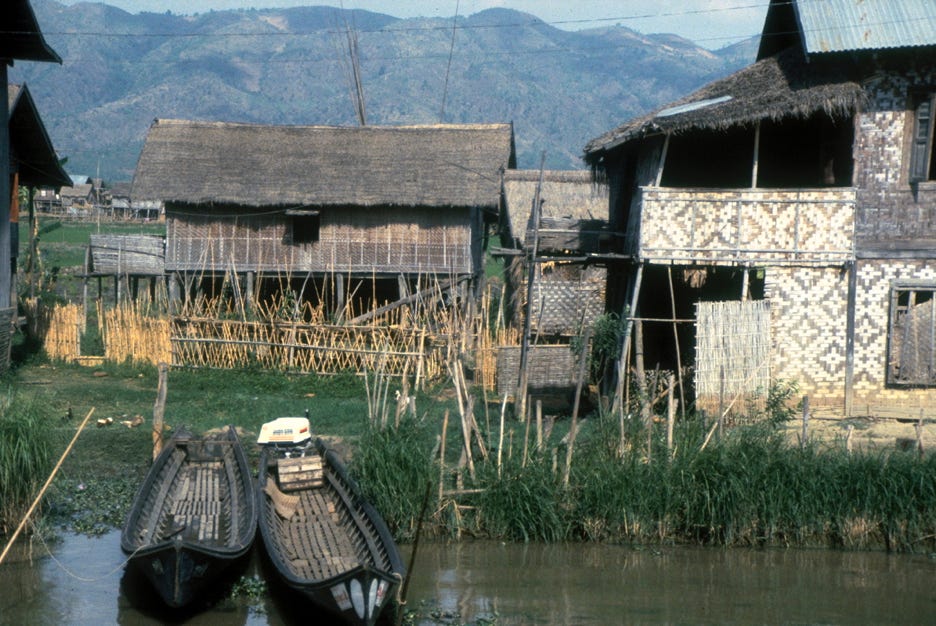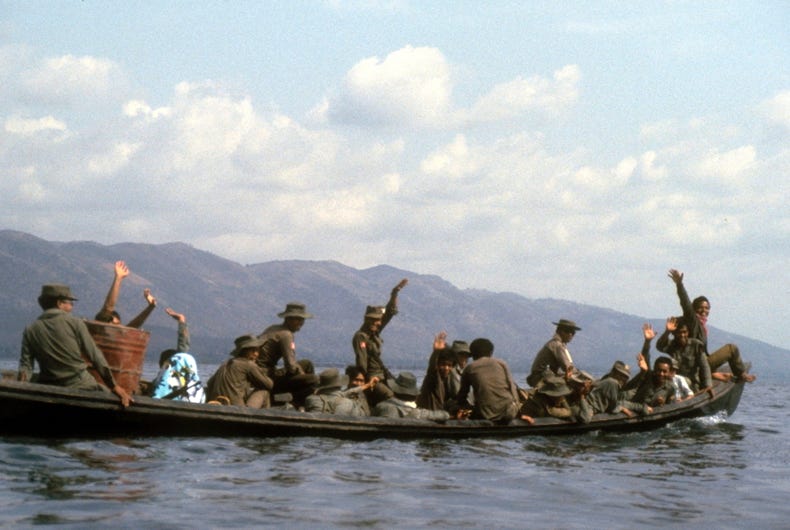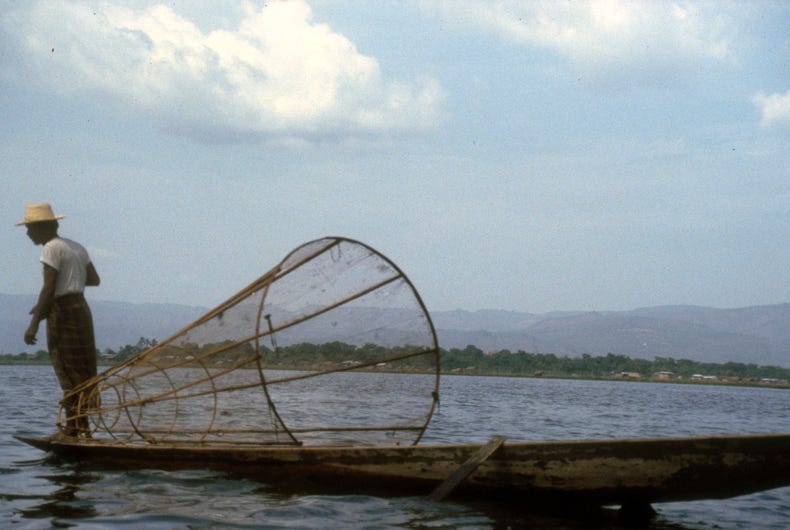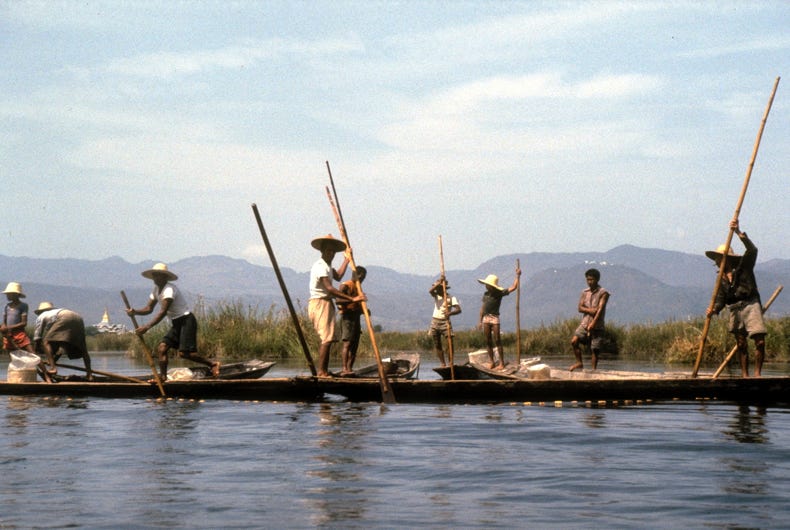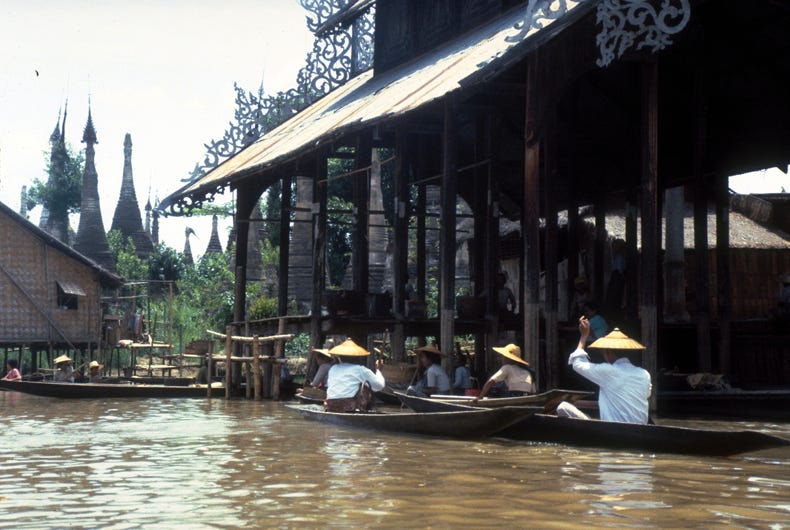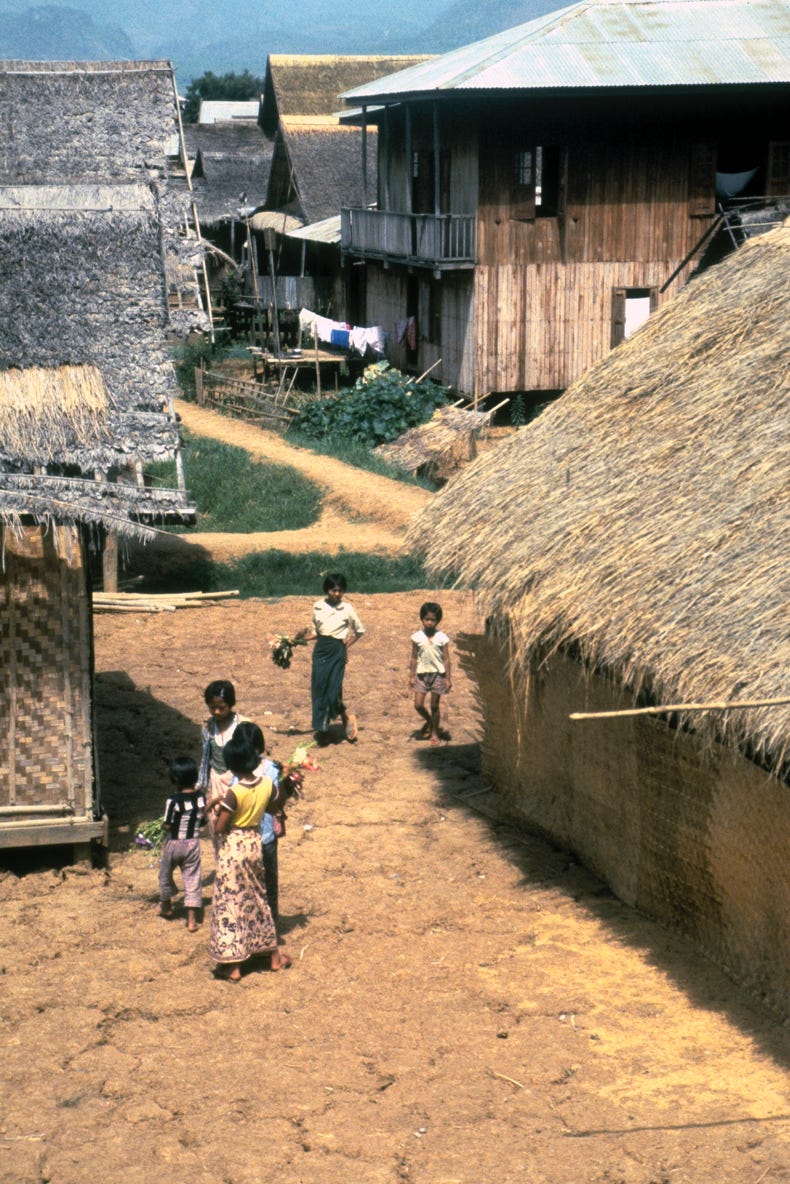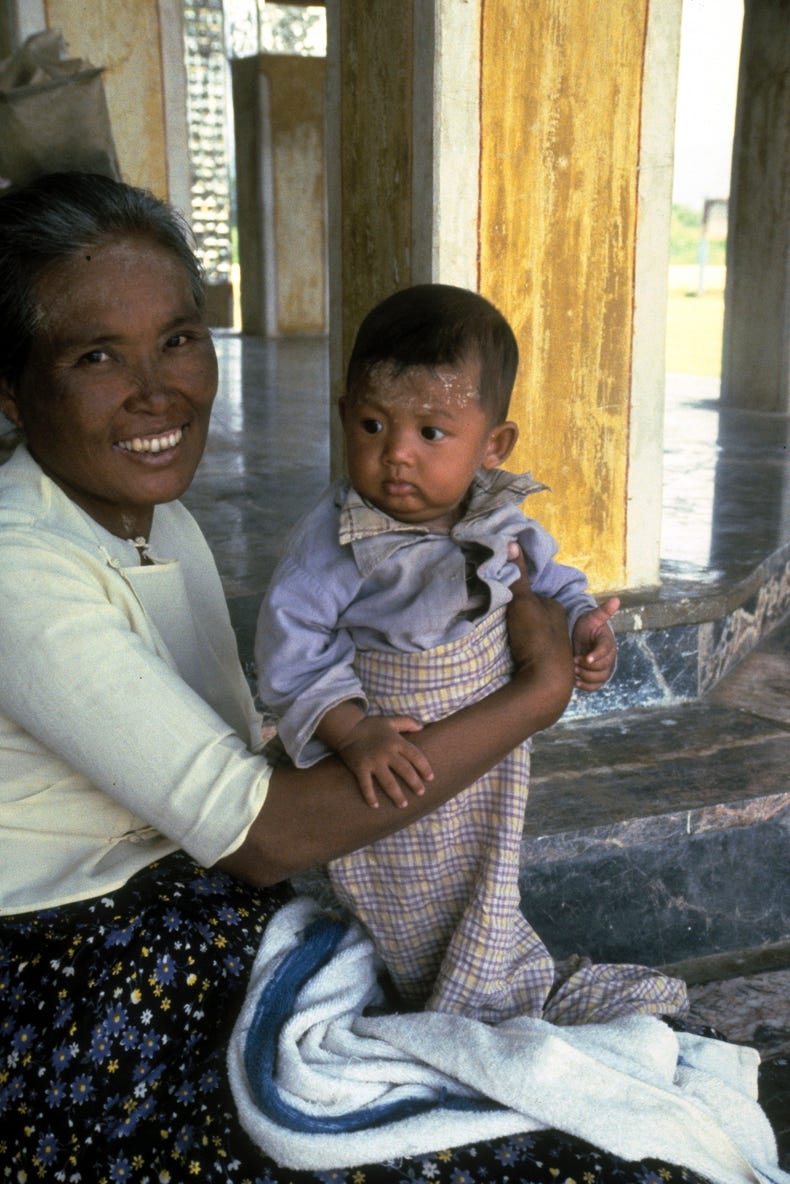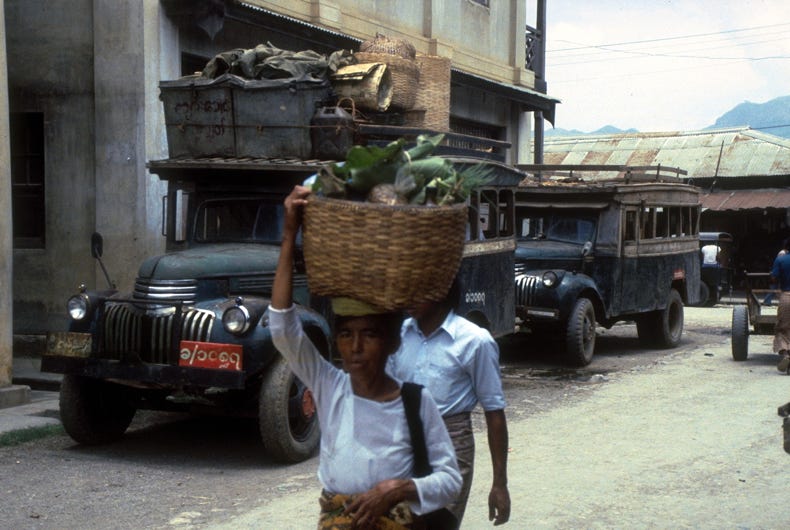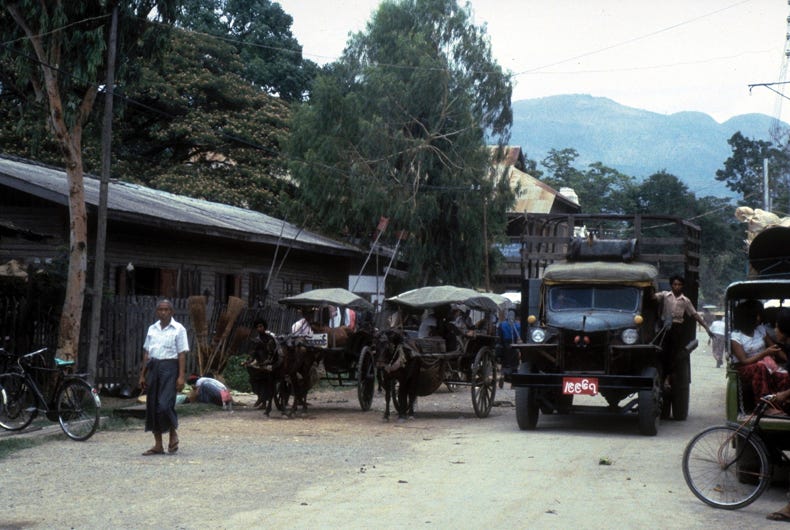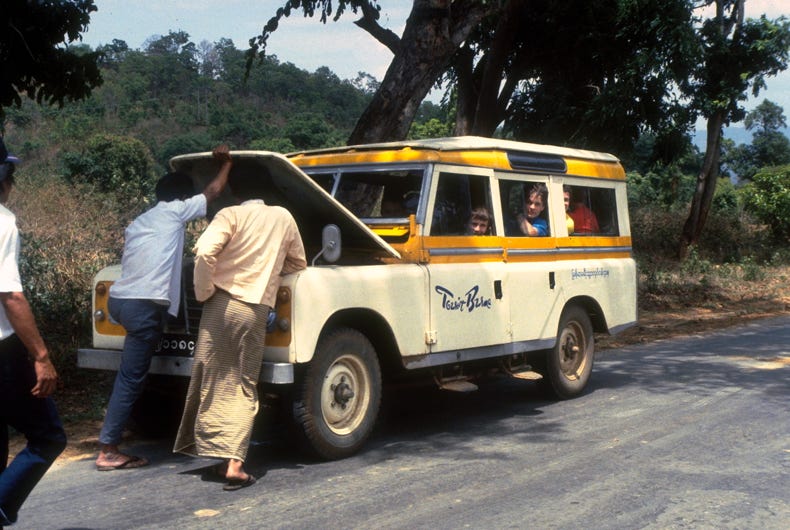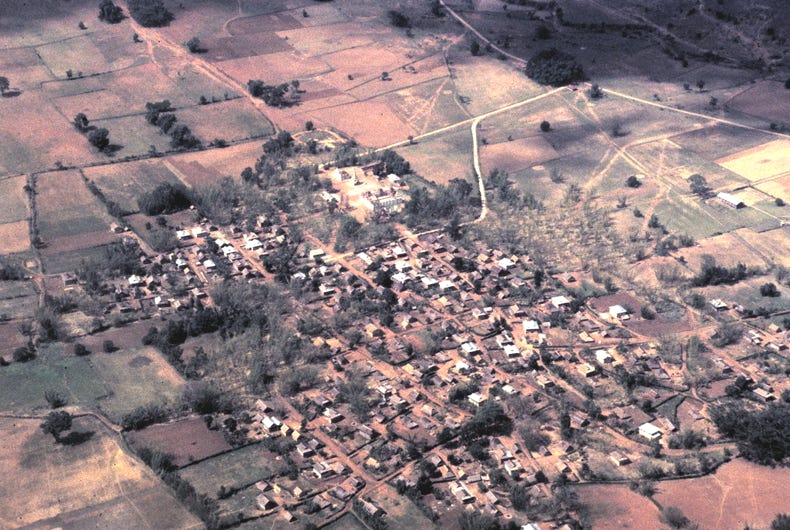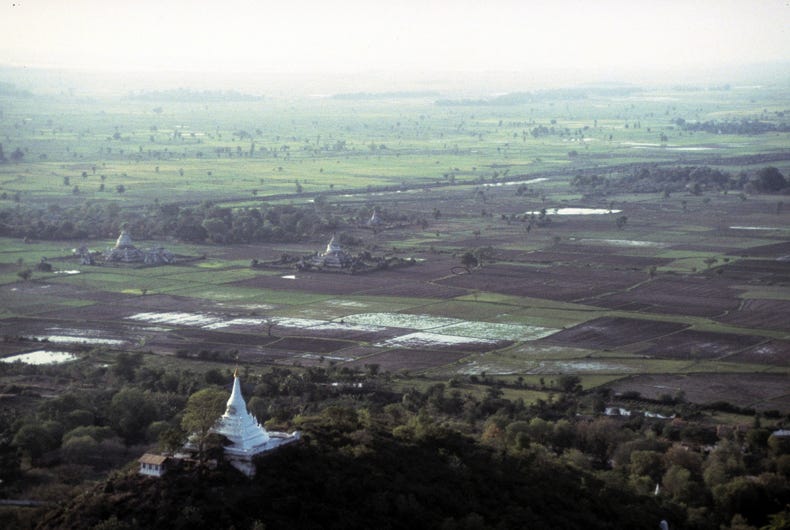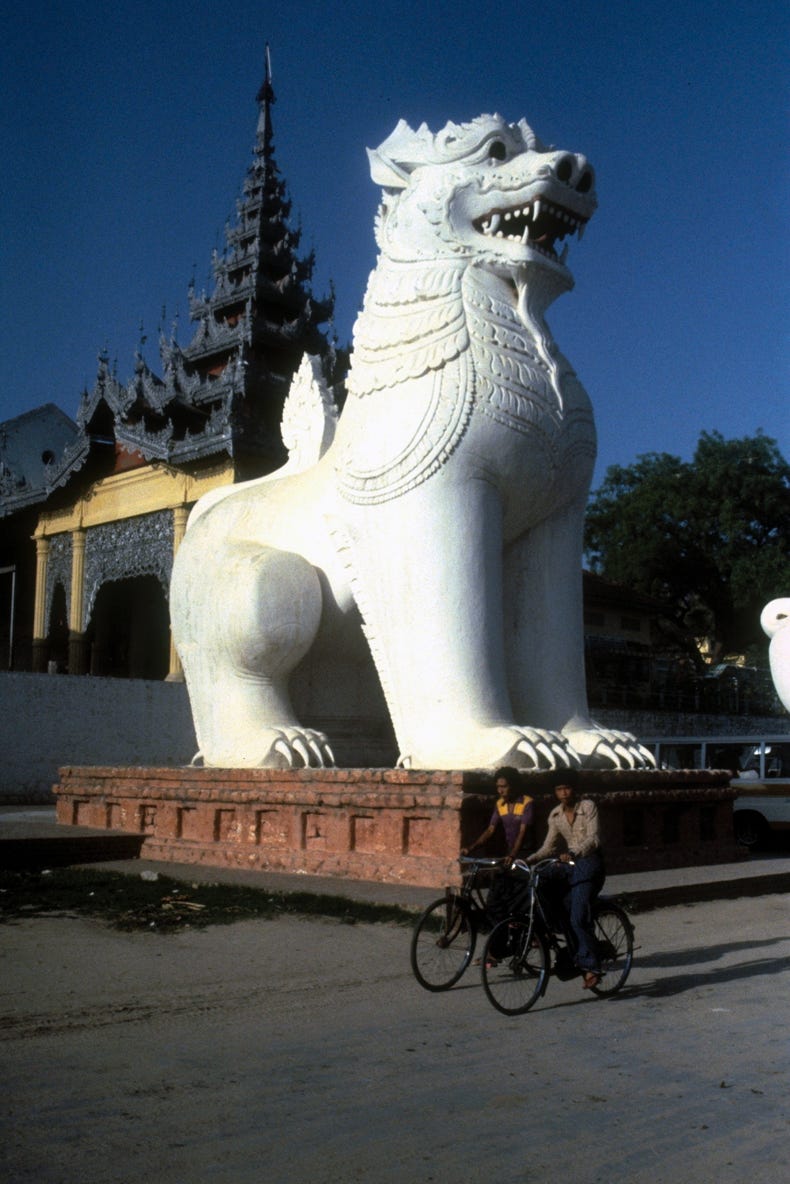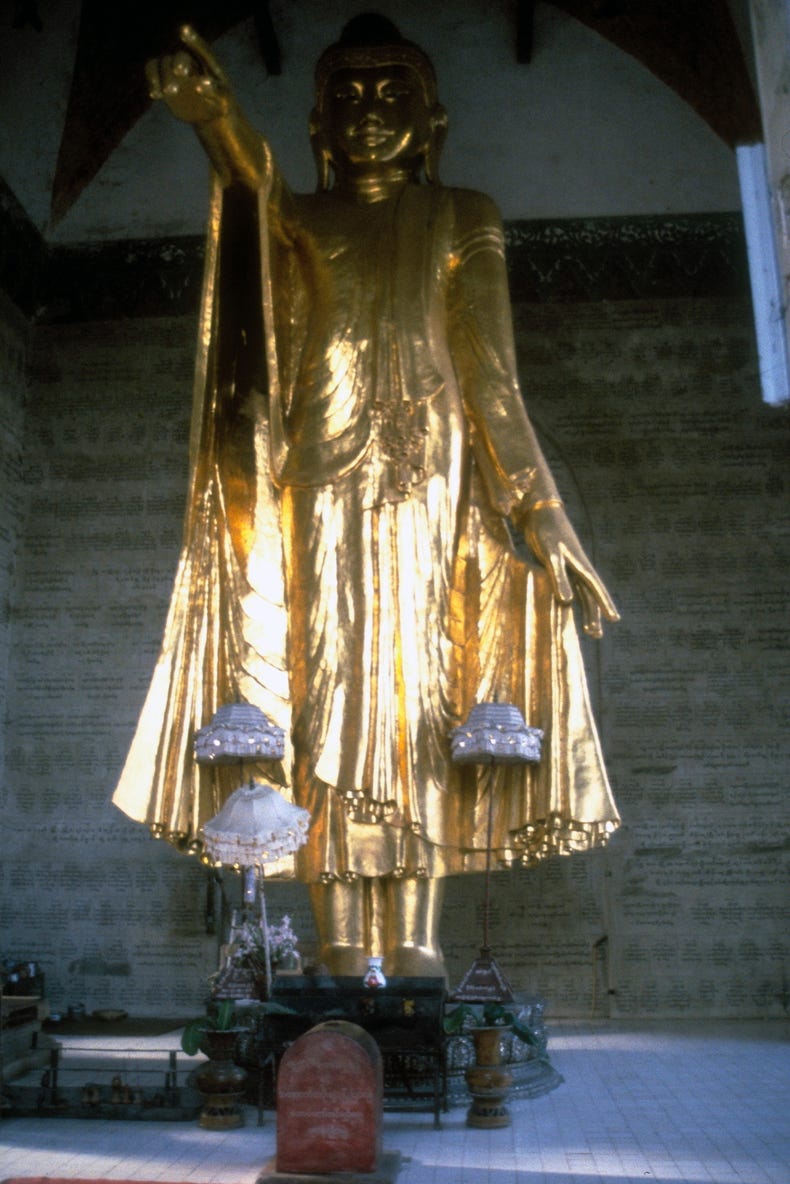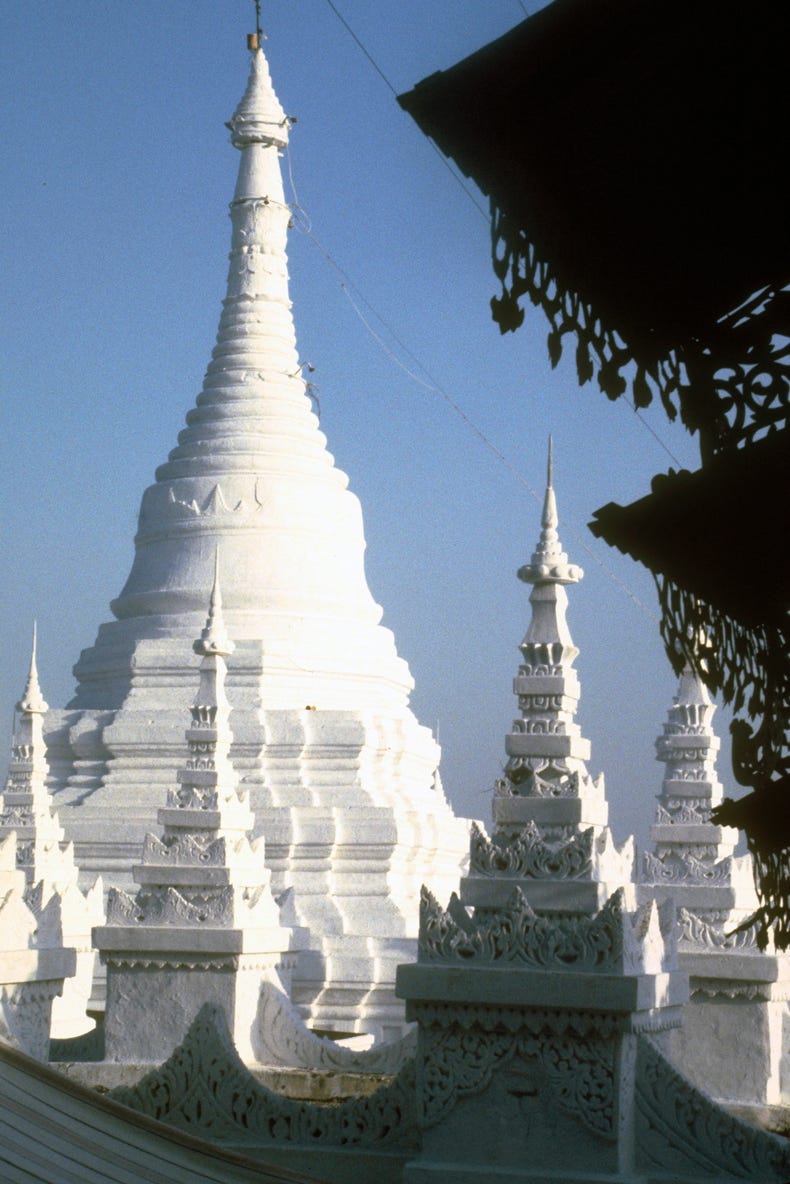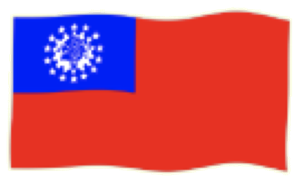

We travelled this morning from Taunggyi through the village of Shwenyaung to the town of Yaunghwe. Yaunghwe is the largest town of the Intha people, who live on the shores of Inle Lake. At Yaunghwe, we transferred to two motorised longboats to travel across Inle Lake to study the unique rural lifestyle of the Intha people. The Intha have developed a technique for converting the humus at the bottom of the lake into one metre thick fIoating islands, suitable for the cultivation of vegetables. Furthermore, the Intha people have developed a unique system of fishing, using woven basket-like cones to catch the fish, propelling the boat with an oar pushed with one leg to free both hands for fishing. At the southern limit of the Inle Lake excursion, which was the village of Ywama, we visited a weaving workshop, a floating market and the Phaung Daw U Pagoda.
The return trip to Heho Airport saw the only breakdown of the trip, when the Tourist Burma Land Rover “gave up”. The problem was overcome simply, however, when the group in the Land Rover transferred to the bus being used by the rest of the group. From Heho, a short 135-kilometre half-hour flight on a Burma Airways Fokker F-27 saw the group in Burma’s second largest city, Mandalay, described as the most Burmese of Burmese cities.
After a short clean-up at the two hotels used by the group, we set off to climb the 1,729 steps of Mandalay Hill, a large (236 metre high) hill of strategic, religious and scenic importance. The summit of the hill presented the group with a fine panorama of Mandalay city, the old palace grounds and the surrounding rural areas of the Irrawaddy plain.
One student on a “frog-bashing” spree this evening hit a dog with a stick by mistake. Not surprisingly, the dog reciprocated by biting the student. As a precaution, the student was taken to a local doctor, who suggested that he (the student, that is) be put on a course of anti-rabies injections. These were initiated at Mandalay General Hospital, where we learned that the 12 daily injections are given radially around the navel – first day at 1 o’clock position, 2nd day at 2 o’clock position, and so on). The experience of entering Mandalay General Hospital and witnessing its conditions (which I would describe as “not very flash”), and watching the student being given these anti-rabies injections around the navel in the casualty ward was an unplanned, unexpected bonus of the study tour.


